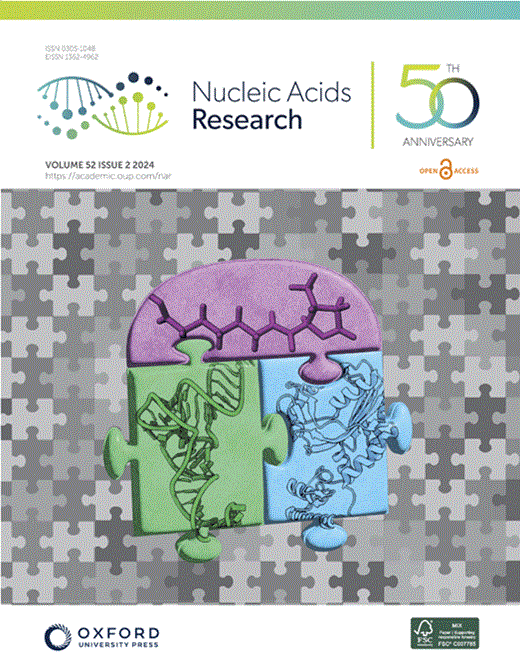用于多路信号处理和细胞控制的合成翻译耦合元件
IF 16.6
2区 生物学
Q1 BIOCHEMISTRY & MOLECULAR BIOLOGY
引用次数: 0
摘要
重新利用自然系统开发生物系统的定制功能是合成生物学的主要方向之一。翻译耦合是各种多聚核操作子中的常见现象,可有效分配有限的遗传空间和细胞资源。翻译耦合的这些有益特性为创造新型合成生物设备提供了令人兴奋的机会。在这里,我们介绍了一种模块化合成翻译耦合元件(synTCE),并将这一设计与从头设计的核管制器、趾hold 开关整合在一起。通过对合成翻译耦合元件序列结构域变体的系统探索,我们确定了提高系统性能的关键设计因素。接下来,这种设计方法被无缝集成到逻辑运算中,并应用于构建具有明确定义的化学计量控制的多输出转录本。这一模块还被进一步应用于信号级联,用于组合信号转导和多输入/多输出合成设备。此外,synTCEs 还能精确操纵输出蛋白质的 N 端,从而促进有效的蛋白质定位和细胞群体控制。因此,synTCEs 可以提高核调控器的计算能力和适用性,用于重新编程生物系统,从而在未来的合成生物学、代谢工程和生物技术领域得到应用。本文章由计算机程序翻译,如有差异,请以英文原文为准。
Synthetic translational coupling element for multiplexed signal processing and cellular control
Repurposing natural systems to develop customized functions in biological systems is one of the main thrusts of synthetic biology. Translational coupling is a common phenomenon in diverse polycistronic operons for efficient allocation of limited genetic space and cellular resources. These beneficial features of translation coupling can provide exciting opportunities for creating novel synthetic biological devices. Here, we introduce a modular synthetic translational coupling element (synTCE) and integrate this design with de novo designed riboregulators, toehold switches. A systematic exploration of sequence domain variants for synTCEs led to the identification of critical design considerations for improving the system performance. Next, this design approach was seamlessly integrated into logic computations and applied to construct multi-output transcripts with well-defined stoichiometric control. This module was further applied to signaling cascades for combined signal transduction and multi-input/multi-output synthetic devices. Further, the synTCEs can precisely manipulate the N-terminal ends of output proteins, facilitating effective protein localization and cellular population control. Therefore, the synTCEs could enhance computational capability and applicability of riboregulators for reprogramming biological systems, leading to future applications in synthetic biology, metabolic engineering and biotechnology.
求助全文
通过发布文献求助,成功后即可免费获取论文全文。
去求助
来源期刊

Nucleic Acids Research
生物-生化与分子生物学
CiteScore
27.10
自引率
4.70%
发文量
1057
审稿时长
2 months
期刊介绍:
Nucleic Acids Research (NAR) is a scientific journal that publishes research on various aspects of nucleic acids and proteins involved in nucleic acid metabolism and interactions. It covers areas such as chemistry and synthetic biology, computational biology, gene regulation, chromatin and epigenetics, genome integrity, repair and replication, genomics, molecular biology, nucleic acid enzymes, RNA, and structural biology. The journal also includes a Survey and Summary section for brief reviews. Additionally, each year, the first issue is dedicated to biological databases, and an issue in July focuses on web-based software resources for the biological community. Nucleic Acids Research is indexed by several services including Abstracts on Hygiene and Communicable Diseases, Animal Breeding Abstracts, Agricultural Engineering Abstracts, Agbiotech News and Information, BIOSIS Previews, CAB Abstracts, and EMBASE.
 求助内容:
求助内容: 应助结果提醒方式:
应助结果提醒方式:


